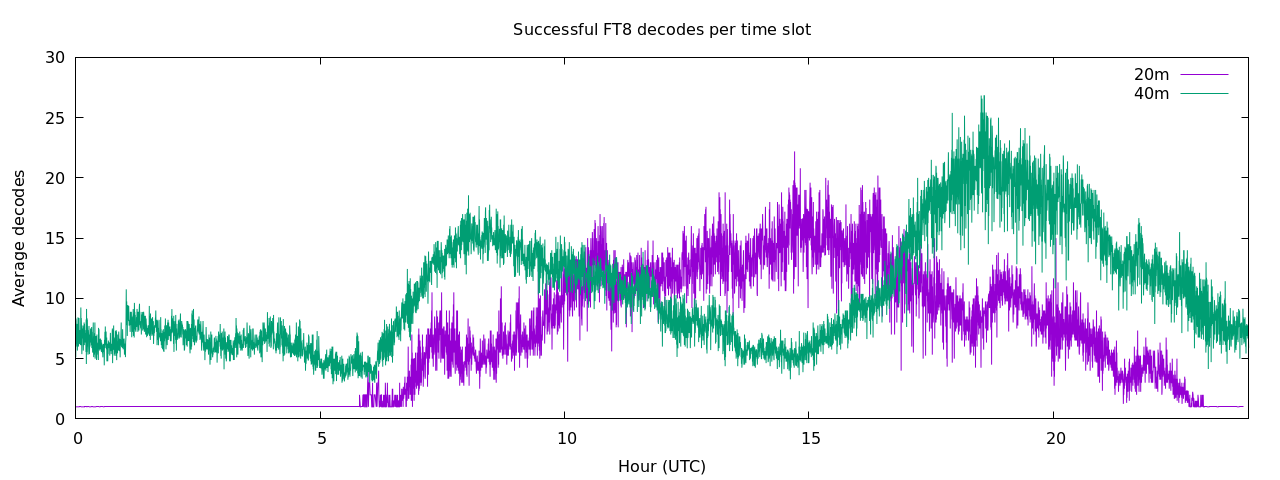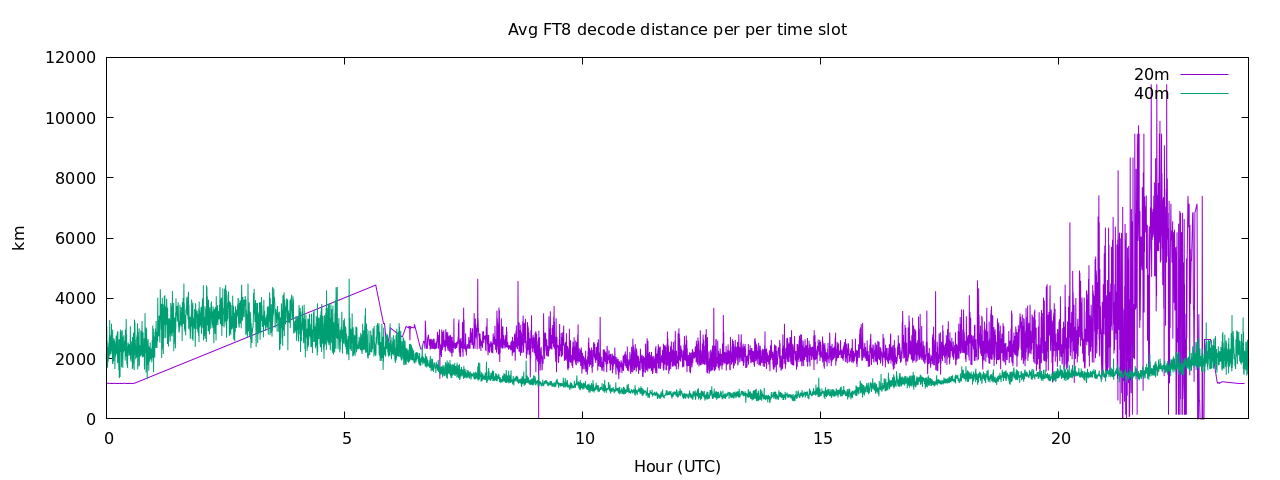Measuring propagation using FT8
One obvious thing that you can do after putting up an amateur radio antenna is to operate a bit on FT8, to see how the propagation goes. Just transmit on all bands and see how far you get.
E.g. this map on pskreporter.info with 10W on my EFHW:

You can also use the reverse beacon network with morse code:
![]()
But that’s just a few samples. What about more statistical data? And propagation over time? I don’t have access to the raw data from pskreporter.info, and even if I did I can’t just set up an automatic beacon tx round the clock every day without requesting a Notice of Variation.
I may do that some day, but it’s a project for another time.
For this post what I want to know is if my antenna setup is better for 20m or 40m. Subjectively it seems like more is trickling in on 40m. And when they say that 40m is better “at night”, what time exactly do they mean?
For passive listening my data will, of course, be heavily skewed by when people are awake and active. But that means it’s skewed towards representing “if I call CQ, how likely is it that I’ll get a reply”, which is also good.
I merge data across multiple days, and compare 20m on one day to 40m on another. So this is not pure science. I’m not claiming proper research here. I’m just playing with data that is very relevant for me (my antenna actually collected it), and in any case interesting.
I wrote a tool that takes signal reports and stuffs them into a json file, and configured wsjtx to send reports to it. Then I made some scripts that turn these into the graphs you’ll see below.
Results

So when they say 20m is a day band… yeah, at least for me. That straight line at “1” will for many time periods actually be “at most 1”, due to a graphing artefact.

But the average distance picks up! Now, probably this is because it’s the best propagation time of day for the US, and the US is far away. So what does come through has a higher chance to be cross atlantic.
Very interesting.
Propagation should, as I understand it, be mostly bidirectional. So it seems that about 22:00 UTC on 20m is the best time for that. But for contacts anywhere it seems 40m about 19:00-20:00 UTC is best. If I were to guess it’s because this is evenings when Europeans are active, and the shorter reach (for me) 40m at least reaches all of Europe.
Future work
There’s more I want to do. Like plot a heat map over the world. And create animations. But this will have to do for today.